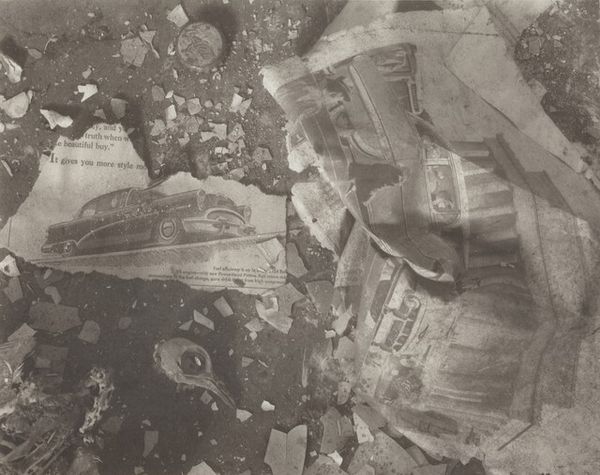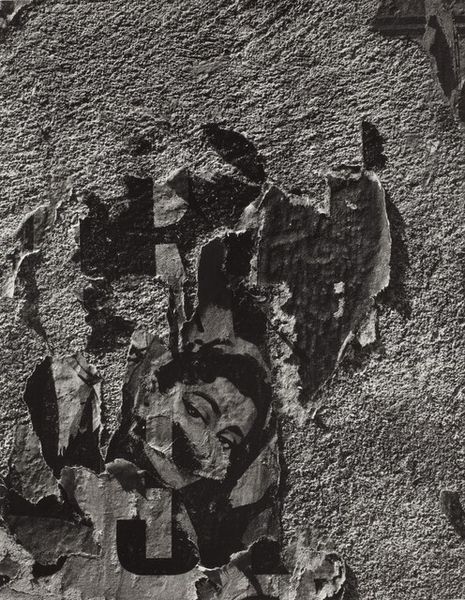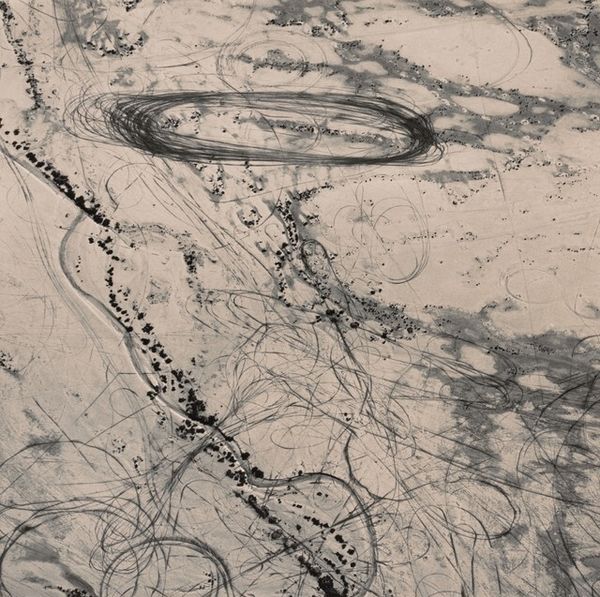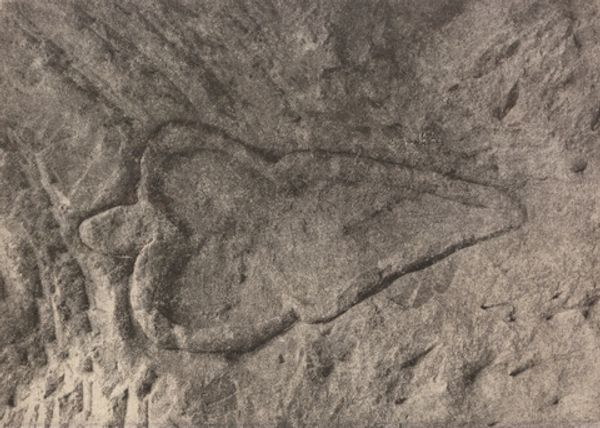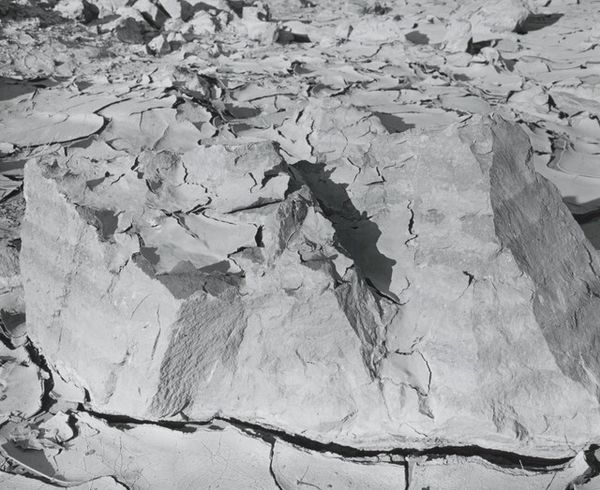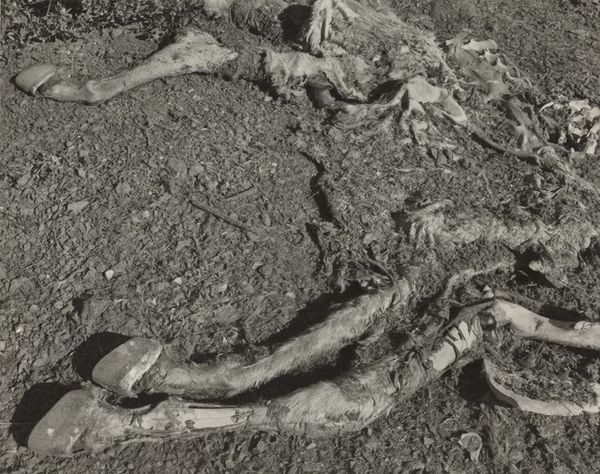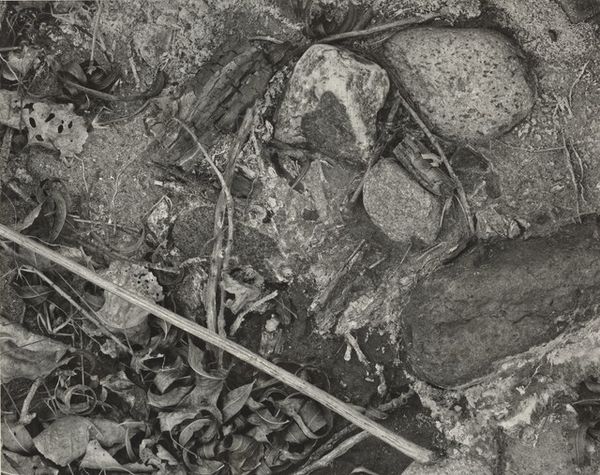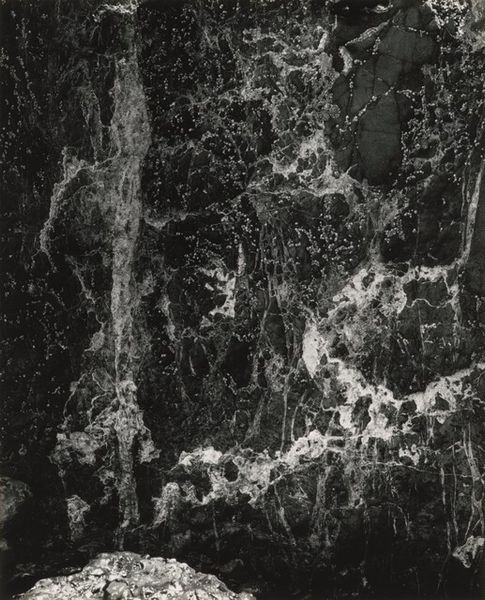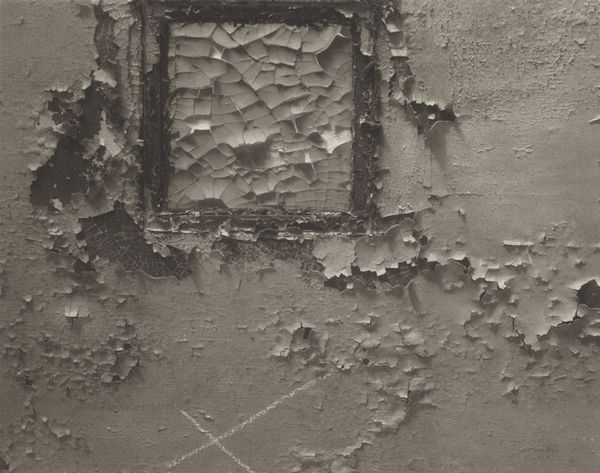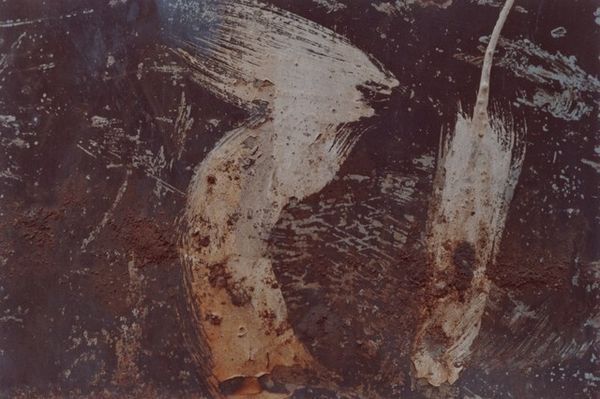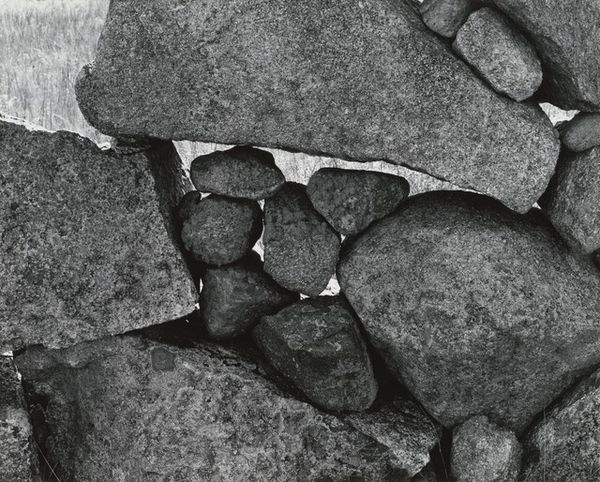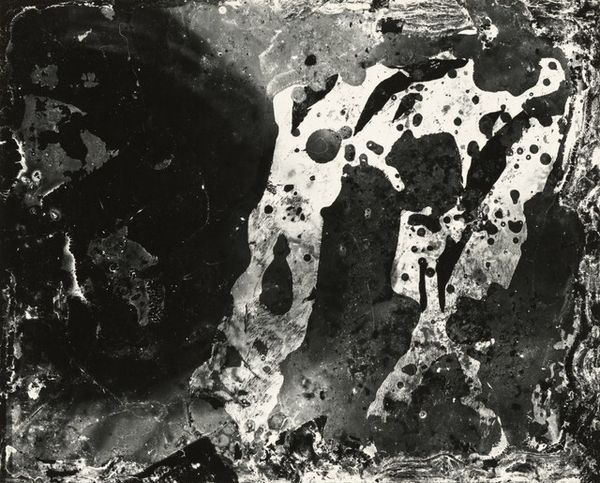
photography
#
natural shape and form
#
conceptual-art
#
worn
#
textured
#
detailed texture
#
landscape
#
photography
#
grainy texture
#
chalky texture
#
carved into stone
#
line
#
texture
#
natural texture
#
organic texture
#
realism
Dimensions: image: 24.5 × 25 cm (9 5/8 × 9 13/16 in.) sheet: 27.7 × 35.5 cm (10 7/8 × 14 in.)
Copyright: National Gallery of Art: CC0 1.0
Curator: Emmet Gowin’s "Mining Exploration near Carson City, Nevada," created in 1988. It's a photograph, stark and undeniably powerful. Editor: My first impression? It feels like looking at veins beneath the skin of the earth, or maybe the remnants of some ancient, colossal nervous system. Curator: That’s a vivid take. Gowin often focused his lens on landscapes dramatically altered by human intervention. The mining scars become like glyphs. The paths almost look like calligraphy written into the landscape. Editor: Yes! Calligraphy implies intentionality. But it is a disruptive type. We're conditioned to seek the beautiful, Edenic landscape. Yet this disrupts our understanding, but leaves us with an oddly artistic image that evokes contemplation of exploitation and memory. The image almost reminds us that beauty and devastation can coexist, becoming like two faces of the same coin. Curator: Right. Gowin isn’t shying away from the complicated relationship. It’s about confronting what we do, what we leave behind. Consider what roads mean across time—how the Roman road mirrors a modern mining road. Humans consistently seeking, consuming, moving. There are layered concepts here. Editor: Exactly. This photograph carries such a heavy symbolic weight, touching on the psychological impact of resource extraction. When viewing the image, the viewer can only imagine the intense upheaval this mining would bring forth. Mining is almost like a rite or tradition across the lands and throughout the eons, extracting valuable material from land that humans believed it possessed some inherent energetic or financial value. The barren tones almost seem a natural hue that have no other color but grayscale. It presents a visual representation of exploitation. Curator: I agree entirely. The lack of color really drills down to the stark reality of the scene. No romance, just raw, almost surgical incisions upon the land. The starkness forces reflection on the implications of these marks. Editor: And that’s what makes it so compelling. Gowin’s photograph invites a profound, if unsettling, contemplation on our enduring impact. We not only consume these resources to leave material residue behind, we create deep wounds in the world that carry spiritual meanings as well. It becomes our past, present, and potentially our doom. Curator: Well said. It reminds us that every image holds layers, whispering stories of human actions and the echoes they leave on the world.
Comments
No comments
Be the first to comment and join the conversation on the ultimate creative platform.
